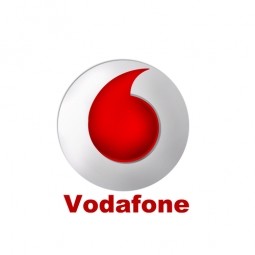Case Studies.
Add Case Study
Our Case Study database tracks 18,927 case studies in the global enterprise technology ecosystem.
Filters allow you to explore case studies quickly and efficiently.
Download Excel
Filters
-
(4)
- (3)
- (1)
- (1)
-
(4)
- (3)
- (1)
-
(1)
- (1)
- (1)
- (1)
- (1)
- (1)
- (1)
- (1)
- (5)
Selected Filters

|
Helping Enexis Power Ahead with Smart Meter Rollout
Enexis is an independent grid operator and one of the largest energy distributors in the Netherlands. Working with energy suppliers, it manages 2 million gas and 2.6 million electricity connections to customers in seven provinces, representing approximately one third of the Dutch market. In 2008, a European Union (EU) directive stipulated that 80% of energy customers must be able to monitor energy consumption by 2020. The Dutch government responded by making a legal requirement for energy operators to install smart metering technology in homes. To meet these targets, Enexis will need to deploy approximately 5 million smart meters, each transmitting energy consumption data once a day, every day. Since 2011, Enexis no longer installs conventional meters, every new meter installed in the grid is a smart meter. This means that during the first few years of rollout, smart meters are installed across the grid. To achieve this, Enexis had several options. Routing data via Power Line Connections (PLC) was impractical because, to work effectively, entire districts would have to install smart meters simultaneously. With the initial rollout limited to replacing faulty meters and new installations, this was not viable. Transmitting data via WiFi, another option, would mean home owners needing a guaranteed connection. “Because we install smart meters that are scattered across our distribution network, the most effective solution was GPRS over M2M SIMs,” says Lonneke Driessen-Mutters, Smart Metering Operations Manager at Enexis. M2M SIMs installed in smart meters would be able to transmit data via Vodafone’s comprehensive mobile coverage in the Netherlands, with no homeowner involvement and minimum installation effort. Enexis invited a number of mobile communications suppliers in the Netherlands to tender. After careful consideration, Vodafone was selected based on cost and service commitments. In addition, Enexis already had a relationship with Vodafone, as they provide approximately 3,000 of the company’s voice and data connections, so they knew the service they could expect. “We’re owned by local government, so our money is public money. The solution had to be cost effective as we have to be careful what we spend,” says Driessen-Mutters.
|
|

|
Microlise Drives Vehicle Telemetry Solutions
Microlise is among only a handful of players in the Transport Management Systems space that offer a one stop solution and service capability. Its investment in research and development needs to be underpinned by a robust, global connectivity platform, enabling the reliable transmission of data from vehicles to customers.
|
|

|
Somfy Evolves Home Automation with Vodafone IoT
TaHoma® is a wireless, multi-protocol service with a single intuitive interface which brings together all the devices installed in a house and allows users to control them from a smartphone, tablet or computer. For many residences, Internet access using fibre or digital subscriber line (DSL) infrastructure may be not be available due to location, or simply not installed due to second and third homes not being occupied for a large part of the year.
|
|

|
ASD Healthcare Delivers True Connected Care
ASD Healthcare’s Cubixx connected refrigeration solution was initially aimed at larger hospitals and pharmacies, utilising Wi-Fi or local area networks (LAN) for connectivity. With phase two, Cubixx would be rolled out to smaller practices and patients homes. The issue for ASD Healthcare was finding a single connectivity provider to cover the entire U.S., and facilitate international expansion.
|
|

|
Increased Range and Flexibility for Custodia Systems Customers
Custodia Systems is a security consultancy based in the UK. It was founded in 2005 by Peter Thompson, a former Goldman Sachs technology and engineering lead, with start up capital of £4,000 (approximately €4,800). It is now the global distributor of Appello tracking devices and its products currently protect £150 million (€180 million) of construction machinery in the UK.The Appello device is a small, portable unit (no bigger than a smartphone) with a battery life of up to two years. It has no external wiring and cannot be located by scanning devices used by professional thieves like GPS (Global Positioning System) units.The device is hidden, for example among the engineering of a piece of plant machinery and sends out a regular signal to mark its present location. Worldwide, Custodia Systems claims 80% of stolen equipment is recovered and back with its owners within eight hours.To ensure consumer confidence and provide a competitive advantage, Custodia Systems needed a fail-safe communications infrastructure that needed to be international, reliable and as accurate as possible. In addition, to support the launch of the AppelloGEO – a new product that can be used globally – Custodia Systems needed a global platform and fixed price international tariffs.
|
|

